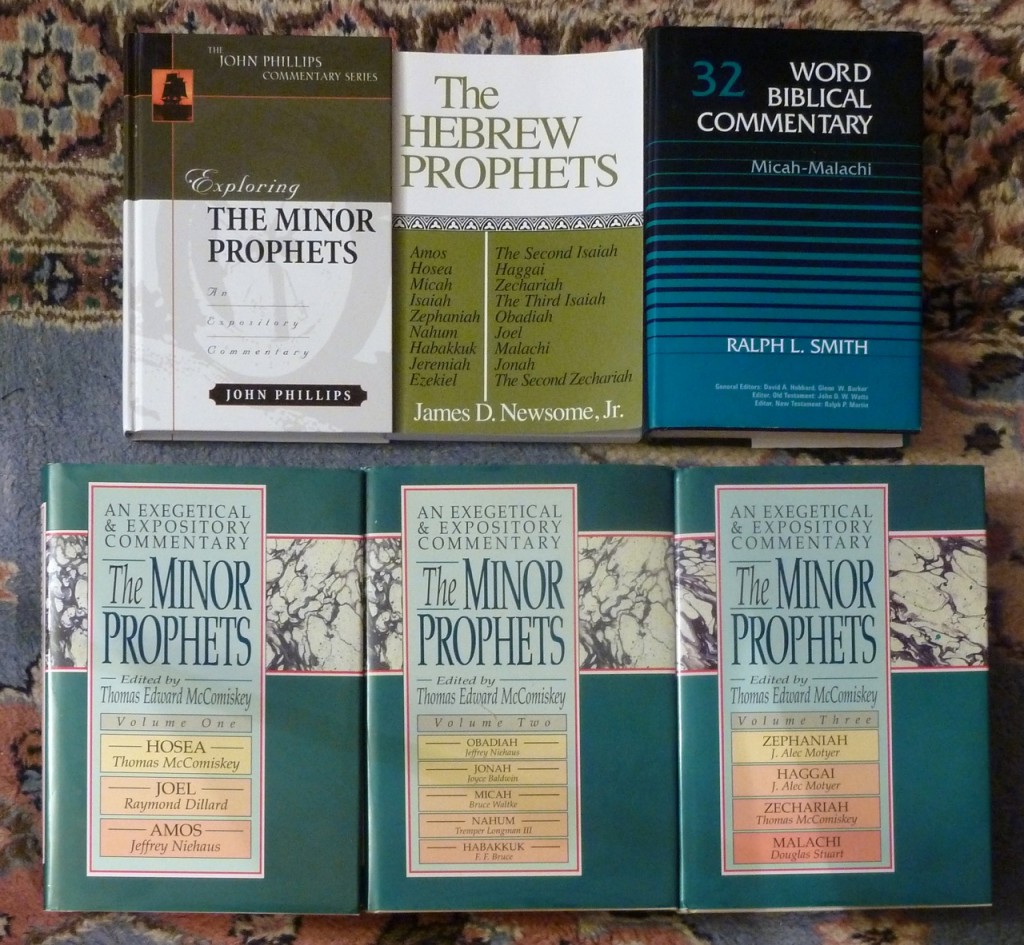If you’re anything like me, you’ve probably thought about leading a minor prophets Sunday school class. If so, step one is finding an artist to create a series of minor prophets-themed pieces of art. Step two is getting some good commentaries. These are the four I used for my class.
The only commentary I bought myself, Exploring The Minor Prophets (1998) by John Phillips, was the weakest. (The remaining commentaries were all borrowed from my pastors.) Philips has some useful things to say, but he interprets the books from a dispensationalist perspective. When you least expect it, he starts in on Russia and the anti-Christ. I don’t recommend it.
The Hebrew Prophets (1984) by James D. Newsome Jr. is an excellent overview for a general audience of all the writing prophets (major and minor) albeit one with mainline assumptions about issues like authorship (with chapters on three Isaiahs and two Zechariahs).
Micah-Malachi (Word Biblical Commentary, vol. 32) (1984) by Ralph L. Smith is another standout volume in the Word Biblical Commentary series, which is written from an evangelical perspective and at an academic-level. (I’ve read six volumes now. The two volumes on Genesis by Gordon Wenham were two of the best commentaries I’ve ever read. I also liked the three volumes on the Psalms, which I’ll review separately. On the other hand, Simon DeVries’ commentary on First Kings was a disappointment.) Each entry in one of these commentaries includes a bibliography, an original translation followed by translation notes, a discussion of “form/structure/context,” a “comment” discussing the passage verse by verse, and an “explanation” that gets right to the heart of the Scripture. Smith’s Micah-Malachi commentary was the most useful commentary for leading my class. If I taught the class again, I’d also get the Hosea-Jonah volume.

Finally, I used The Minor Prophets: A Exegetical & Expository Commentary, an insanely detailed, three-volume, 1,400-page commentary, written by nine authors and edited by Thomas Edward McComiskey. The series proved useful in class because it addresses just about any question about the text a class member could pose. On the other hand, it can be a tough read. The most annoying feature was that the entire thing is written in two parallel sections (exegesis & exposition) separated by a horizontal line running across each page (but at varying heights). The authors didn’t use these sections consistently. For some books, the top (exegesis) section is mostly over questions about the meaning of the Hebrew text and is best skipped by a lay reader. However, some of the authors included a lot of useful information there. The bottom (exposition) section read like other scholarly commentaries, but was much longer.